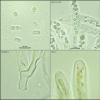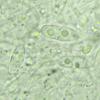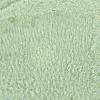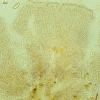
15-11-2025 23:22
Mario FilippaHello,this is what I think to be Hymenoscyphus mac

14-11-2025 16:26
 Marian Jagers
Marian Jagers
Hello everyone, On dead wood of Cytisus scoparius

15-11-2025 20:25
 Riet van Oosten
Riet van Oosten
Hello, Found by Laurens van der Linde, Nov. 2025

14-11-2025 18:31
 Lothar Krieglsteiner
Lothar Krieglsteiner
Hello,can somebody provide me with a file of:Rothe

12-11-2025 09:25
 Viktorie Halasu
Viktorie Halasu
Hello, I need help with a pale terrestric Pseudom

11-11-2025 20:16
Bohan JiaHi, lastly I have found these tiny yellow decayin

09-11-2025 13:20
Hello.A tiny ascomycete, appearing as erupting gra
Tiny discos on Populus
Juuso Äikäs,
17-04-2021 19:34
The spores measure 9.4 - 13.1 × 3.9 - 4.2.
Any idea what might be the species/genus?
Hans-Otto Baral,
18-04-2021 16:10

Re : Tiny discos on Populus
This would require a section. Is the excipulum porrecta? gelatinized?
Perhaps a Hyaloscypha (minuta, intacta...)?
Juuso Äikäs,
19-04-2021 15:20
Re : Tiny discos on Populus
Thank you for the reply.
Unfortunately these are so small that I won't be able to make a section. But I studied the sample a bit more.
Some spores have a septum and there is a rection with the excipulum and the margin with Melzers'. I measured three asci and they were 57 - 65 × 9 - 10.5 (H2O).
H. minuta isn't found on our species list or in the monograph, but H. intacta is. It seems to fit in other parts, but there weren't even short hairs to be found. Is there a hairless version of this?
Unfortunately these are so small that I won't be able to make a section. But I studied the sample a bit more.
Some spores have a septum and there is a rection with the excipulum and the margin with Melzers'. I measured three asci and they were 57 - 65 × 9 - 10.5 (H2O).
H. minuta isn't found on our species list or in the monograph, but H. intacta is. It seems to fit in other parts, but there weren't even short hairs to be found. Is there a hairless version of this?
Hans-Otto Baral,
19-04-2021 16:15

Re : Tiny discos on Populus
H. minuta is newly combined and you find it in my Hyaloscypha folder. Yes, it is a hairless member or may have very very short hairs. It is not easy to be separated from H. intacta. Sequences exist, and as a preliminary result the two species are the same. Of course, the types are relevant in this concern. That of H. minuta I have redescribed in detail, and that of intacta Seppo has.
Strange is that the two species were described in the same year.
B.t.w., dextrinoid reactions of the ectal excipulum have variously been recorded by Huhtinen.





